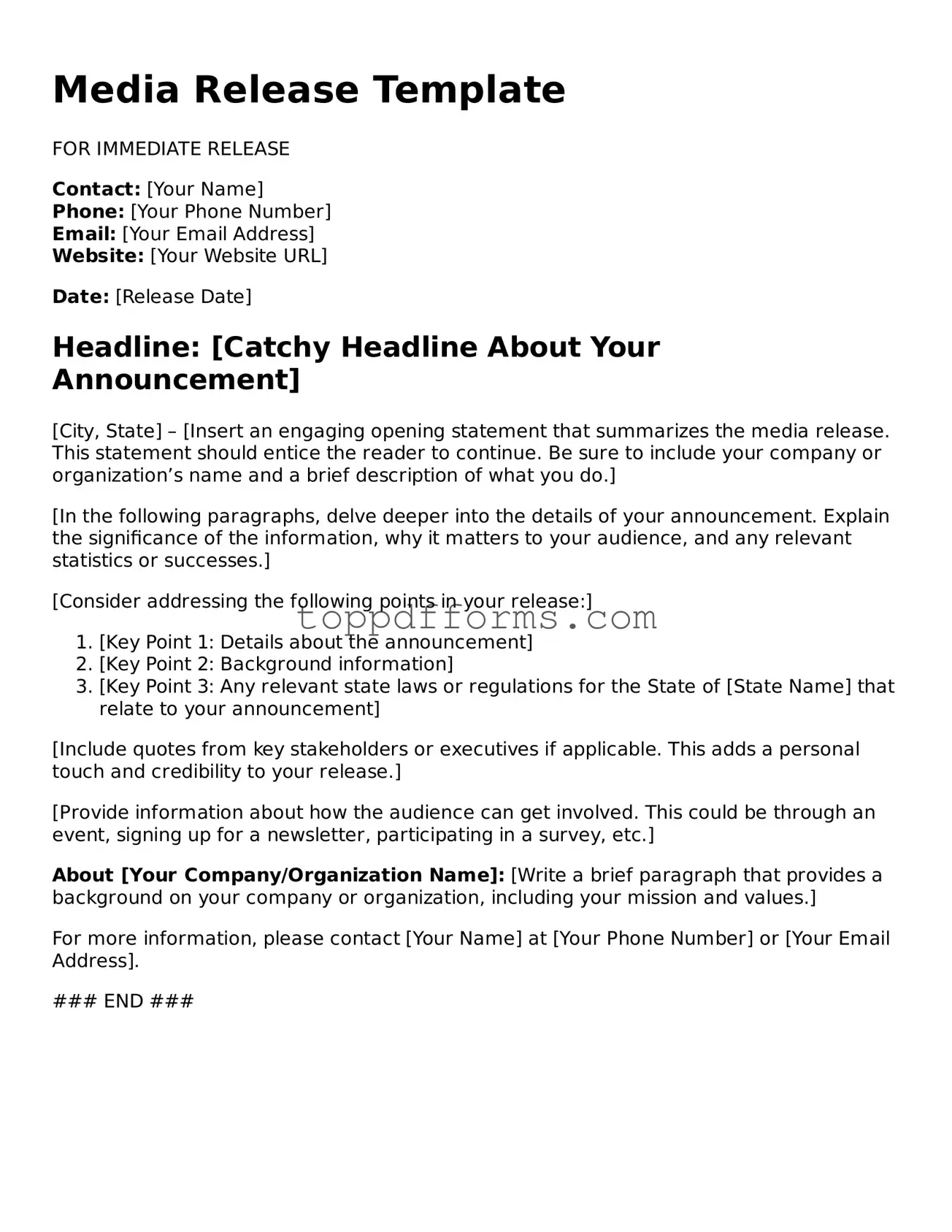What is a Media Release form?
A Media Release form is a legal document that grants permission for the use of an individual’s image, likeness, or voice in various media formats. This can include photographs, videos, or audio recordings. By signing this form, individuals allow organizations, companies, or media outlets to publish or distribute their content without any further consent. This is often used in contexts such as promotional materials, advertisements, or news coverage.
Why is a Media Release form important?
The Media Release form is crucial for protecting both the individual and the organization. For individuals, it ensures that they have control over how their image or voice is used. For organizations, it provides legal protection against potential claims of unauthorized use. Without this form, there could be misunderstandings or disputes regarding the use of someone's likeness, leading to legal complications.
Who should sign a Media Release form?
Typically, anyone whose image, likeness, or voice will be used in a media project should sign a Media Release form. This includes participants in events, actors in videos, or individuals featured in photographs. If the person is a minor, a parent or legal guardian must sign on their behalf. It is essential to ensure that everyone involved understands what they are consenting to before signing.
Can a Media Release form be revoked?
Once a Media Release form is signed, it generally cannot be revoked. However, the specifics can vary based on the terms outlined in the form itself. Some releases may include clauses that allow for withdrawal under certain conditions. It is important to read the form carefully before signing to understand the extent of the permissions granted and any potential limitations on revocation.
